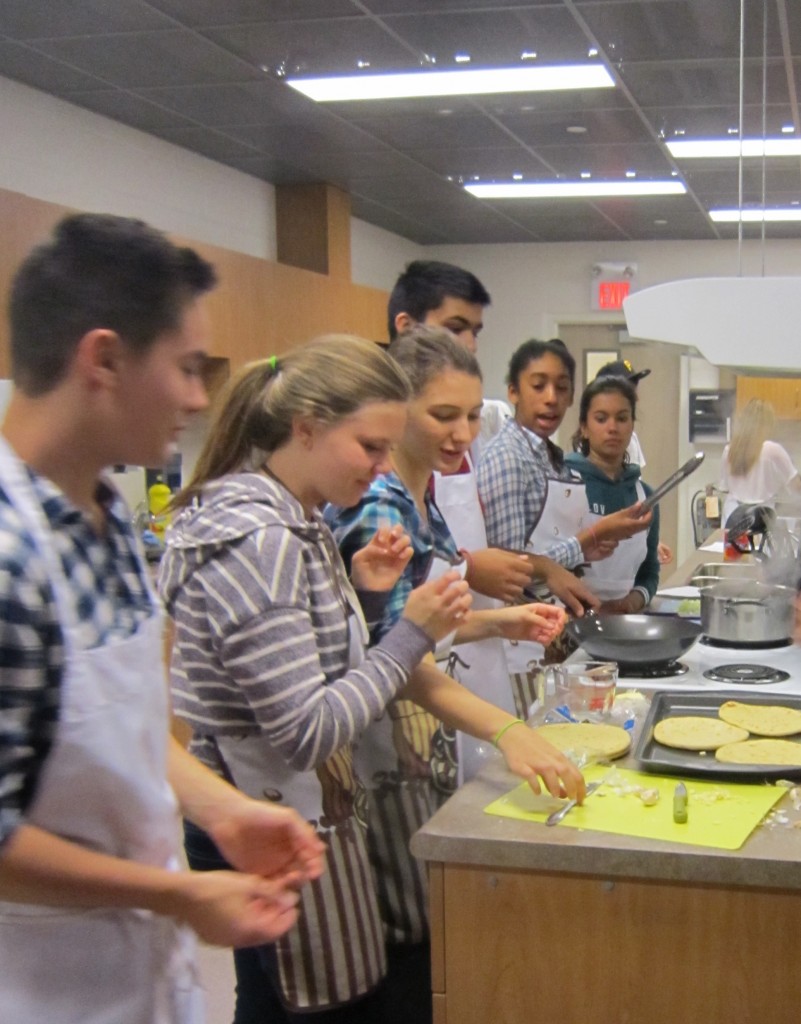March 17, 2017
BURLINGTON, ON
Run that by me again – Why are we doing this ?
According to the Board’s Program and Accommodation Review (PAR) policy, a Program and Accommodation Review is initiated if one of the five conditions listed in the policy are met. Out of the five conditions, two have been met which justifies the PAR.
There are five conditions but no one at the Ministry of Education wants to say what the five are. Director of Education Stuart Miller uses two of the five to justify his report to the trustees asking that a PAR be held on the Burlington high schools.
The HDSB web site has details on how the two conditions the Director refers to were met – they are set out below.
What the Gazette cannot find out is – what are the other three conditions. Director Miller used two of the five. What the other three are is not known to us. A call to the Ministry of Education got nothing but a statement on how much money they are spending in Halton. It was an almost pure piece of public relations fluff.
Condition 1: Low Utilization, Enhance Secondary Programming and Learning Opportunities
Condition 2: Enhance Secondary Programming and Learning Opportunities
Condition 1 states that the school or a group of schools has/have experienced or will experience declining enrolment where On-The-Ground Capacity (OTG) utilization rate is below 65%. Currently two secondary schools in Burlington have utilization rates below 65%, and one school is approaching this threshold. It is projected that all three schools will be below 65% utilization by 2020:
School OTG (Building Capacity) 2015 Enrolment, 2015 Utilization, 2020 Enrolment, 2020 Utilization
Condition 2: Enhance Secondary Programming and Learning Opportunities
By reorganizing the school and creating larger grade sizes and enrolments, the Halton District School Board can enhance program delivery by offering more courses and a variety of courses using funding that would otherwise be spent on maintaining empty spaces. The benefits of each school type are highlighted in the table below.
School Type/Benefits
Small Secondary School (Enrolment of 600 or less)
Staff tend to know each student better and may be more able to proactively intervene to support a student who is in need of assistance;
Extra-Curricular Participation – while the number and types of activities available to students may be fewer in a smaller school, students are more likely to make a team/activity because there are fewer students interested in participating in each team/activity;
Higher ratio of service area staff to students – to maintain core functions in the area of Special Education, Guidance and Library, smaller schools have a significantly richer staffing ratio than larger schools. This however comes with increased costs to the Board;
Less pressure on the physical space in the building e.g. less scheduling challenges on gym space.
Large Secondary School (Enrolment of 1000 or more)
More course options available to students to support different learners, interests and pathways.
Fewer scheduling and timetable conflicts – In the 2014/2015 school year, 39% of students at smaller schools had timetable conflicts while at larger schools 19% of students had timetable conflicts. Timetable conflicts often result in students not being able to take a course they had selected because two or more of their selected courses are running in only one semester at the same time.
Fewer “shared” students – a shared student is a student that is registered in more than one school. These students register for a course they require/want that is not available in their home school. In 2014/2015 12% of students (234 students) were considered a shared student in small homes schools. 4% of students in a large home school were considered shared students (169 students).
Fewer Early Leavers in larger schools – An Early Leaver is a student that leaves school prior to graduating. In 2014/2015 the percentage of early leavers prior to graduation was 1% at large schools and 3% at smaller schools. This in turn affects the graduation rates at high schools.
More teacher subject specialization – more classes mean more teachers, therefore it is more likely to get specialized teachers while smaller schools with limited classes have less diversity in staff. For instance in larger schools there may be 4-5 science teachers, a biology specialist, physics specialist , a chemistry specialist and two science generalist, while at a small school there may be only 2 science teachers to teach all science curriculum areas.
More opportunities for Extra-Curricular participation – in larger schools there are more staff and thus more opportunity for greater special interests and skills and thus a greater offering of extracurricular activities.
More funding for students, less spent on maintaining empty spaces.
That’s two of the five conditions. We want know what the other three conditions are.
























Thank you Jason for the info…appreciated.Something not mentioned is the difference between OTG for one school compared to another. You have Central with OTG of 870 with 595 students which is 68% capacity. Another school like MM has OTG of 1347 with 730 students which is 54% capacity. Even though one percentage from one school is lower, they still have more students.
It seems that if someone disagrees with you Tom you accuse them of something. If you aren’t right in all your comments that are inflammatory to some they must be ????
I say thank you Jason for clarifying some of the wrong info.
Our educators need to take a step back and start looking at the programming issues from a different perspective, as One-Size-Fits-All does not work. Have a look at this post from a Niagara parent:
“Following closure of our local school and consolidation into another school, already at capacity, the school board in Niagara promised the following upgrades for the impacted children:
1. More extra curricular activities – that turned out to be a lie based on lack of teachers willing to supervise
2. More access to sports programs – that was also a lie as only those kids who made the team were able to play; no “B” teams were created due to lack of teachers
3.A safe environment – that was a lie.. my child was bullied almost immediately and throughout her time there. She was pushed to the ground and had grass shoved down her throat by a gang of boys
Large schools damage mental health of our kids”
Having attended Nelson HS in the 80’s I was surprised by how small some of these other Burlington High Schools were.
I’d like to point out that if a student is on a City bus for an hour or more a day (traveling to school) the benefits of a “large” school would be negated.
Further,if students have to travel greater distances to school this will only increase traffic congestion. I send my child to public school were the school is 1000+ kids. The traffic is nuts because people have to get their kids from greater and greater distances.Parking etc….
Ken
You left Central off your list. It is in the PAR because enrollment has dropped 14% since 2010 and will hit 65% enrollment by 2017 (SIP page 134). Yes, it is projected to be above 65% by 2020 but the PAR is looking at all South Burlington schools with goal of addressing approximately 1800 empty seats.
Only one of the criteria need be met to trigger a PAR. The specific criteria are documented in the HDSB Policy and available on the HDSB web site here https://www.hdsb.ca/our-board/Policy/ProgramAccomReview.pdf.
The family of schools under review met two of the five, the other three are not relevant to the current PAR process.
Here are the criteria from page 2 of that policy document:
PROCEDURES
1. The Director’s Preliminary Report to the Board
Prior to establishing a pupil accommodation review, the Director will present to the Board of Trustees a
preliminary report that identifies a school or group of schools that may be considered for a Program and
Accommodation Review (PAR) if one or more of the following conditions apply:
● The school or group of schools has experienced or will experience declining enrolment where the On the Ground (OTG) utilization rate is below 65%;
● Reorganization involving the school or group of schools could enhance program delivery and learning opportunities for students;
● Under normal staffing allocation practices, it would be necessary to assign three or more grades to one class in one or more of the schools;
● The current physical condition of the school(s) negatively impacts the optimum operation of the building(s) and program delivery;
● In respect of one or more of the schools under consideration there are safety, accessibility and/or environmental concerns associated with the building, the school site or its locality.
Jason B
You are back to forgetting that the 1800, or whatever, seats were produced back in 2009, on purpose, by the Board. They didn’t tell any of the public or parents, and the PAR should have been held then. That’s fact.
The overall utilization is 75 to 80%. The new seats in Hayden are at 118 to 150 % – overutilization of 214 to 604 seats.
The main reason any schools are at or below the 65% is because of the biased boundaries and feeder distributions chosen by the board.
in addition, the Board’s population and pupil yield models are projecting too low enrollment, and this is known, but are still being used.
The conditions you cite here applied then. The Board agreed then to fund the new seats by getting rid of some of the existing, at a future time.
But you act and speak like this is just fine.
They should be fired for such failure to act in a trustworthy, open manner.
According to the Directors report you cite, this will only get worse with growth, infill, and other development that is presently assigned to the Hayden boundaries and feeder distribution.
A reshuffle of the city-wide boundaries and feeders can keep all schools above 65%, and move the average utilization toward the 75 to 80% level.
I would add that the path the Board is on leads to another key logical implication, not yet in people’s consciousness, which is due to the overflowing utilization, portables, and directing of new pupils to Hayden.
In time, with no boundary and feeder changes to balance things, the stated continued growth there, and actual population and pupil yields that have been over the Board estimates used, there will be another over-utilization based demand for another school. It’s a clear consequence of not changing how the utilization is balanced.
You need to ask if such a thing is being considered or if it is.
I can’t understand how you can just continue to blind yourself to these facts, and then insist that the PAR now is somehow kind of legitimate, no matter the consequences, and is the proper way to go.
Frankly, you sound just like an apologist for the Board.